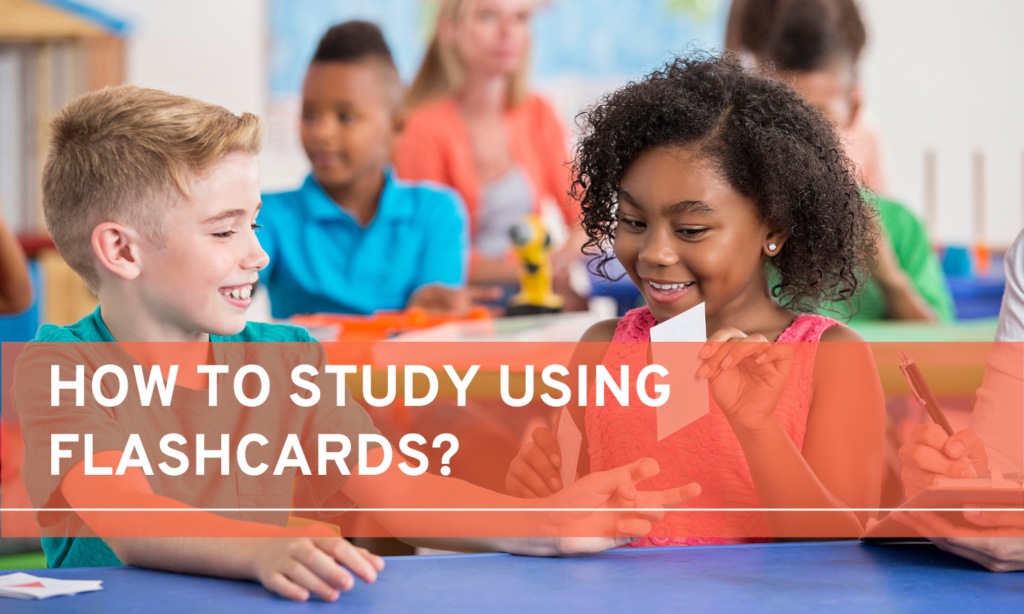There are several ways to create your own flashcards. These methods include the use of dual coding, spaced repetition, and mnemonic devices.
Some of them may even be more effective than others. Here are the benefits of creating your own flashcards. Read on to learn more. This technique is also known as “mind mapping.”
Table of Contents
Making Your Own
Making your own flashcards for studying can be a fun way to learn vocabulary words or the periodic table. It requires you to gather some materials and identify important information.
In addition to index cards, pens, and paper, you can use illustrations and mnemonics to help you remember new information. You can also use different colors to categorize your cards to keep them organized.
These are great study aids for anyone who needs to memorize vocabulary words quickly.

The quality of your flashcards is dependent on the quality of your notes. If you’re having trouble taking notes, practice jotting down the main points of your lessons and lectures.
Make sure to review your notes regularly to help you retain the information. It’s also a good idea to add some pictures to your cards to make them more memorable.
However, you’ll need to spend some time practicing before you use them.
One trick to making great flashcards is to simplify your topics. Complex topics are not appropriate for flashcards, since they require too much information.
If you’re studying a complex subject, break down the topic into short bullet points and study that way.
Otherwise, you’ll end up with a bunch of cards that aren’t very useful. You can always use other methods instead of creating your own.
Spaced Repetition
Using flashcards with spaced repetition can be a great way to memorize information.
You may have already heard of the theory, but did you know that the more you see a certain card, the more likely it is to stick in your mind?
This concept is the basis for many study methods, including using flashcards. In fact, it has been proven to be so effective that it is used by many professionals and academics.
The theory behind spaced repetition was developed by Robert Bjork. This method aims to maximize the desirable difficulty and therefore learning.
A famous example of this method is the Leitner System, where you rank each card one to five and then revisit the box according to your ranking.
While the theory behind this method is largely based on science, it has a number of applications, including improving memory and test scores.
The concept is based on the principle of spaced repetition, and it is a proven method of memorizing information.
Using flashcards with spaced repetition is more efficient than studying on your own, eliminating the need for tedious rewriting of notes or cramming study sessions.
Also, you no longer need a desk or heavy books to study. You can use flashcards anywhere, making them an excellent study tool.
Mnemonic Devices
Mnemonic devices are creative ways to remember information. They are quick to learn, simple to use, and help us retain information. These can be in the form of a sentence, an acronym, or even a song.
Most of us have been exposed to these mnemonic devices in our daily lives. Some of the most popular mnemonic devices are: ROYGBIV (red, green, blue, indigo, violet).
The acronym stands for the order of the colors of the visual light spectrum.
Mnemonic devices are useful in many aspects of life, from helping us remember a new vocabulary word to a complex medical concept.
However, they are not the best method for learning atomic numbers of elements. This is because atomic numbers of elements do not fit easily into a visual hierarchy.
For example, it is easy to remember the word “magnesium” and tie it to Mg, but not the number 12!
When studying using flashcards, it is important to remember that we all forget some information. That’s natural. But by practicing quizzing yourself and repeating the material, you’ll improve your memory and speed of learning.
Mnemonic devices for studying using flashcards can also help students study faster. These methods work better for students who study using flashcards than for those who don’t.
These strategies are particularly useful in classes with large amounts of names and vocabulary.
Dual Coding
Creating dual-coded study materials is an effective way to learn new information. When creating flashcards, consider using visuals along with text.
Visuals can improve recall and help you understand difficult information. But do not use visuals to over-complicate your study materials.
Using pictures and text with flashcards has its limitations. In addition, it may confuse students. Here are some ways to deal with this dilemma:
The first method of dual-coding is to use two types of information in your flashcards. You can use visuals, like timelines or cartoon strips, to help students remember the topic.
You don’t have to recreate exactly what’s in the materials, but you should make sure the visual depicts the information contained in the class material. You can also use a combination of both methods to enhance your memory.
Another technique is to alternate the learning modes. This is called dual-coding and helps students retain more information. This method uses multiple sensory inputs to increase their likelihood of using the pathways during recall.
This method may improve learning because it creates more neural pathways. It may also improve retention by strengthening the connection between two types of information.
By utilizing two different modes of learning, learners are able to create more neural pathways and make better use of those pathways during recall.
Retrieval Practice
Whether you’re taking an upcoming test or studying for an exam, you’ll benefit from retrieval practice to retain important information.
It helps you recall information, and the more you practice retrieving, the better your recall will be.
However, it can be difficult to memorize complex information.
Luckily, there are many ways to make it easier for you. Read this article to learn more about retrieval practice and how you can benefit from it.
One of the most effective ways to incorporate retrieval practice is to have frequent, low-stakes quizzes.
These can be free response or multiple-choice questions, and polling is another effective way to incorporate this study method.
Quizzes can be automatic, or you can use a low-stakes assessment method, such as a poll. You can also make use of digital tools for quick feedback, such as Google Forms.
Another way to use retrieval practice is to ask your students to write down their answers to a question or answer.
The questions should be as broad or as specific as possible, and provide an opportunity to compare the answers of multiple students. This way, you can get an idea of where students need more practice.
This is a good way to give feedback to students and teachers. By providing feedback, you can make sure that your students are retaining the information and will be motivated to continue their studies.
Interleaving
Many students struggle with memorizing the information contained in their flashcards.
However, there are many advantages of using flashcards in this way, such as improved retention and test scores.
This article will discuss the benefits of using interleaving to help you master your math and other subjects.
Read on for more information! Listed below are some of the most common benefits of interleaving flashcards for studying.
Using interleaving flashcards for studying is a proven way to boost learning efficiency. It involves mixing up the topics studied to strengthen the connections in your brain.
Unlike blocked practice, where you focus on the same subject for long periods of time, interleaving forces your brain to switch operations and improve its memory.
As a result, you can get more done in less time. Here’s how it works:
When using interleaving flashcards for studying, make sure to give yourself enough time for each topic to retain its information.
Doing so will make studying less of a chore and increase your motivation. You will also notice improved memory retention with this method.
But remember to avoid attempting to use interleaving flashcards as an excuse to switch subjects. Instead, persevere with the subject you are currently studying until you have achieved success.

